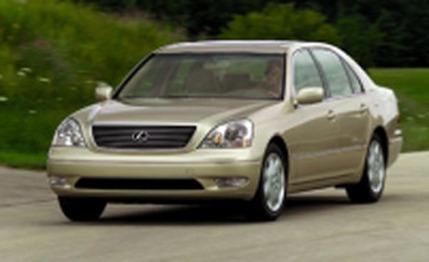
 Road Test
Road Test
Some automakers are forever describing their new but utterly ordinary cars as "revolutionary" or "world-class" or "setting a new standard." Such hyperbole, regularly ginned up by shameless proles in the promotion department, have reduced these words of grand praise to hollow drivel. But once in a great while the hyperbole turns out to be true. Which seems to be the case, in many respects, with the new Lexus LS430.
Ten years ago, the first generation of this car, the LS400, permanently changed -- dare we say revolutionized -- the big-spender end of the market. Before Lexus came along, the Germans were riding a reputation of design and engineering infallibility stretching back to the '60s, a myth they leveraged into a monopoly of the luxury-car trade. But as happens with monopolists, they became arrogant and complacent, raising prices to nose-bleed altitudes with impunity and getting by with incremental upgrades to their cars from year to year rather than keeping them up to date with timely redesigns. In effect, they were telling their customers, "Hey, if you're going to quibble, go somewhere else."
Then along came Lexus, and suddenly there was a someplace else. The Japanese company forced the German automakers, Mercedes-Benz in particular, into painful reforms that ended careers and buried long-held illusions of invincibility.
Lexus, being a unit of Toyota, the world's third largest automaker, had the resources to take on the Germans and do it right. Although the design was clearly Mercedes-derivative, the flagship LS400 sedan really did raise luxury-car standards in engineering, quality, comfort, and quiet operation. Just as important, the new Lexus car had the audacity to undersell its German counterparts by thousands of dollars -- the original LS400 was 20 grand less than the bottom-of-the-line Mercedes S-class of the day -- a marketing ploy based on this novel premise: Even rich people like a good deal.
Lexus is sticking to the same script with the 2001-model LS430, which will start at about $55,000 and top out around $70,000, and a Lexus exec assured us it will not exceed that mark.
For all that long green, the LS430 buyer gets a luxury sedan that's "90 percent all-new," according to Lexus, with just a few minor components carrying over from the previous generation. At first glance, though, the newness isn't all that apparent -- this one looks a lot like the last one. Which is to say, the LS430's styling is simple and unadorned but imposing and clearly identifiable. The car's lines and proportions neither hide nor emphasize its size but combine to give it a gravitas appropriate for a car of its class. It may not make heads swivel, but it will draw appreciative nods.
But look past the styling, and the differences between this new car and last year's LS400 become apparent. Although the LS430 is the same length (196.7 inches) as its predecessor, its wheelbase (115.2 inches) is three inches longer. Two inches of that materialize as additional rear-seat legroom, and the other inch makes space for a rearward shove of some underhood components to put their weight closer to the center of gravity. The longer wheelbase also offers some ride-quality advantages, but the object of the redesign, says Yasushi Tanaka, the engineer who headed up the LS430's design team, was "to exceed the competition from Europe in terms of handling and stability."
The car has the hardware to do the job. Displayed in cutaways at the press preview for the LS430, its major bits and pieces looked like landing-gear parts from an F-14 Tomcat. The front and rear suspensions are tidy, strong, and light, with hot-forged aluminum control arms and steering knuckles. The one-piece, two-piston brake calipers would be at home on a race car; the brake rotors are a foot across.